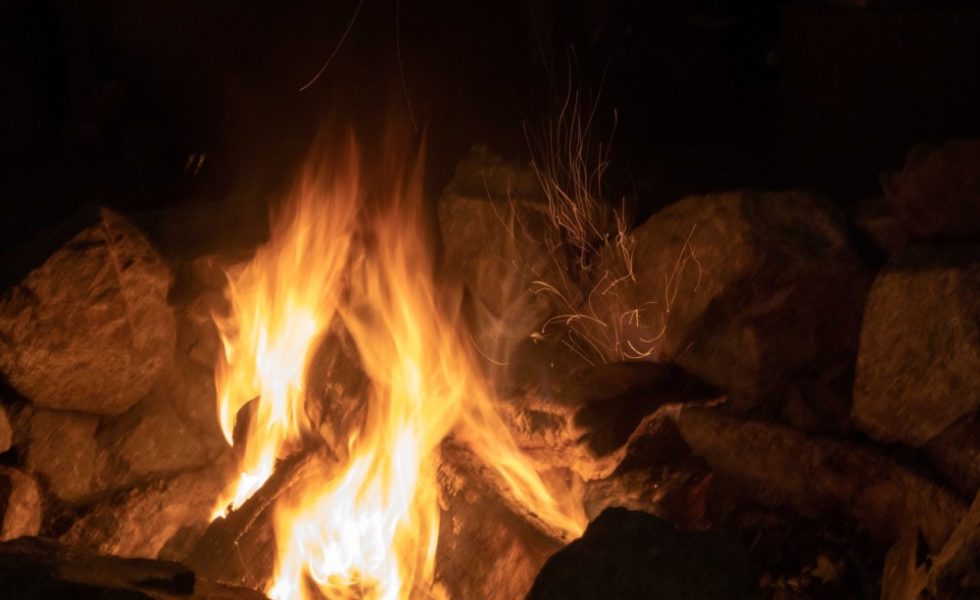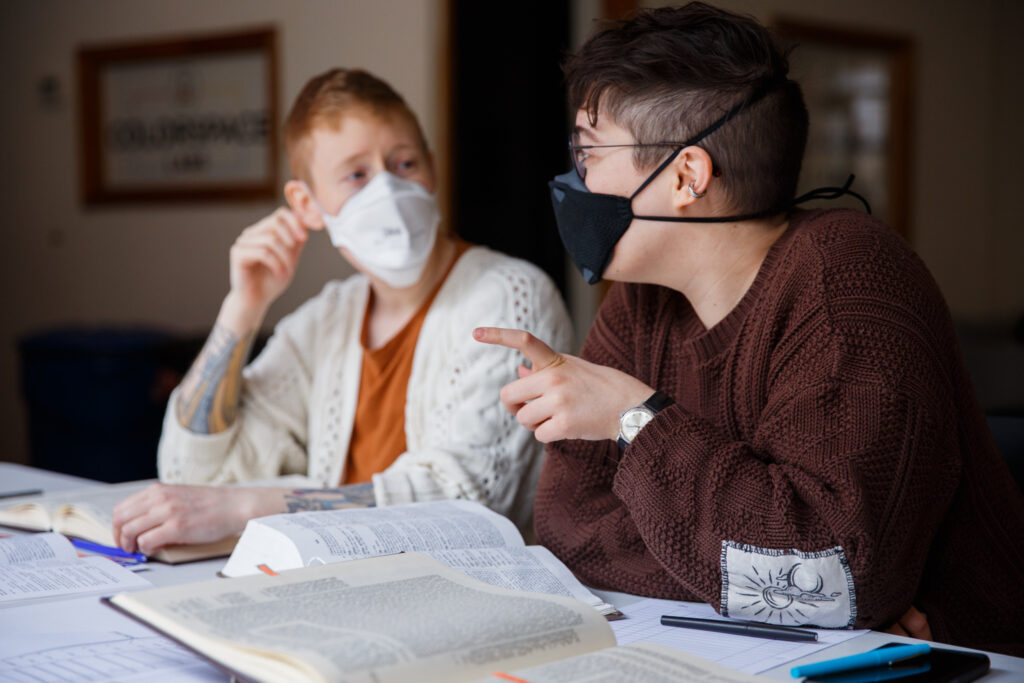Though it’s not the most glittery holiday in the Jewish calendar, Tisha b’Av is an important day for our lineage as SVARA-niks. Tisha b’Av was the day when, for our Option 3-fairy-queen-rabbi- ancestors, the crash was undeniable (remember the crash theory?). In some ways, Tisha b’Av is like the ultimate “coming-out day” for Option 3-ers; and like many experiences of coming out, it gets a lot worse before it starts to get better.
How bad did it get? Well here’s a reminder from the CRASH Talk—the year is 70 c.e. and the day is the 9th of the Hebrew month of Av, hence Tisha (9) b’ (of) Av (the month). The Romans, who have been occupying Israel, finally destroy the Second Temple, the central locus of a very simple kind of Judaism that had very plain answers to all of our master questions—remember those? “Why am I here?” “How do I live a good life?” “What do I do if I do something wrong?” “What happens after I die?” etc. The Second Temple had a system to answer those questions, mostly centered on making sacrifices at the Temple at the appropriate times, but not much else. Then the Second Temple was destroyed and over the course of the next 80-some years the city of Jerusalem was nearly razed to the ground. Many Jews went underground to survive, many were exiled and deported, or enslaved and sex-trafficked to Roman nobility, or just brutally murdered. Of those that survived it, some went Option 1 (“Crash? What crash? Everything’s fine, we’ll just rebuild the Temple one day!”) and they didn’t last long; or went Option 2 (“Crash? Damn straight there was a crash! I am outta here with a new and much hotter Master Story”) and most of those folx jumped on the Roman bandwagon, and also didn’t last very long.
Oh yeah, things were really bad, but the truth is- our fairy-queen-rabbi-ancestors knew in their guts, long before it happened, that the Second Temple wasn’t working. How did they know? Because get this—that wasn’t even the first time the Temple in Jerusalem had been destroyed!
Tisha b’Av actually commemorates the destruction of the First Temple in Jerusalem at the hands of the Babylonians, one of the largest colonial forces of its day, in the year 586 b.c.e. The Temple that stood then was the original sacrificial locus. So the thing is—after the First Temple was destroyed, folx were going Option 1 then too—that’s why they built a Second Temple in the exact same way! There were also plenty of Option 2ers who just joined up with the Babylonians and lived their #blessedBabylonianlife, that is, until the Assyrian Empire came and conquered them too, which goes to show—not just every Master Story, but every colonial empire will, one day, crash.
So you might say that those Option 3ers were in the Talmudic-closet during those centuries between the First and Second Temples. Like many of us who have known what it’s like to be in the closet, our ancestors developed creative and sometimes ingenious mechanisms to be able to spiritually, emotionally, and physically survive. They developed unique modalities of Judaism that were not temple-based—liturgy and incantations, home altars and ritual foods, folk stories and street-wisdom, magic and mysticism—and many of those things, which were super svara-saturated, came to make up the Mishnah which we know and love today.
The truth is—maybe it was all those years in the Talmudic-closet that actually prepared our ancestors with the creativity and perseverance that it would take to be able to fully come out as Option 3 in 70 c.e. and say, “Okay crash, I see you, that sacrificial system really isn’t cutting it, and I’m going to take all the best parts from my master story and use my svara, my lived experiences and those of my comrades in community, to make something better.” Now, many centuries later, we live out-loud-and-proud in our SVARA batei (pl. of ‘beit’) midrash. #ThankYouQueerRabbis.
Berakhot 3a tells a story about Rabbi Yosei who entered into one of the ruins of Jerusalem to pray- להתפלל. The root of this word is פלל, which means “to judge, assess, divide, arbitrate, argue, or intercede. The verb ‘to pray’ is in the reflexive form, and although its outside translation means “to pray”, some possible inside translations might include “to self-assess, to arbitrate inside oneself, to argue with oneself or ones’ assumptions”, etc. etc. It’s a pretty fabulous word. The prophet Elijah reprimands him, teaching Rabbi Yosei that he should not pray in the ruins, but then a remarkable moment happens. Elijah asks Rabbi Yosei: “What voice did you hear in that ruin (חורבה)?” Rabbi Yosei responds: “I heard a Heavenly voice (בת קול) cooing like a dove and saying: Woe to the children, for it is due to their sins that I destroyed My house, burned My Temple, and exiled them among the nations.” Elijah gives Yosei a reality check- (this is a VERY outside translation) – “Dude, G!d doesn’t just say that when you pray in the ruins, G!d says that 3 times a day!” And then Elijah really drops the prophetic mic:
בְּשָׁעָה שֶׁיִּשְׂרָאֵל נִכְנָסִין לְבָתֵּי כְּנֵסִיּוֹת וּלְבָתֵּי מִדְרָשׁוֹת וְעוֹנִין ״יְהֵא שְׁמֵיהּ הַגָּדוֹל מְבֹורָךְ״, הַקָּדוֹשׁ בָּרוּךְ הוּא מְנַעְנֵעַ רֹאשׁוֹ, וְאוֹמֵר: אַשְׁרֵי הַמֶּלֶךְ שֶׁמְּקַלְּסִין אוֹתוֹ בְּבֵיתוֹ כָּךְ
At any moment when Israel enters synagogues and study halls and answers, ‘May His great name be blessed,’ the Holy One, Blessed be He, shakes His head and says: Happy is the king that they praise Him in His house.
This is the key, y’all—we have recreated the Beit Midrash as the house for Divine encounter, for recognizing the limitless creative potential and inherent glittery spark in all of us. On this Tisha b’Av as Jewish communities will commemorate world-wide what is often considered the saddest day in the Jewish calendar, here’s an invitation for you to access Tisha b’Av from another svara-inspired lens: crashes are often hard, terrible, destabilizing, and terrifying, but they don’t have to be the end of your story. Just as it was not the end of the story for those who came before us, neither will it be for us as we continue their radical legacy which has been about placing the experience of the holy, of audacious awe, in the house of study and in the space between two people in chevruta, unfolding revelation for each other again and again and again. What we learn from studying and engaging with the crashes of the past are keen insights from generations of svara that can help us navigate the crashes that may be on the horizon for us in our own day. May we be resilient like our ancestors, may we come to להתפלל (pray) with a deep, wrestle-ready look inwards, and if it is your custom to fast, let this be one of the many ways in which more space is created inside you to welcome the flow of your own svara, and the ability to truly receive and revel in the svara of others.







